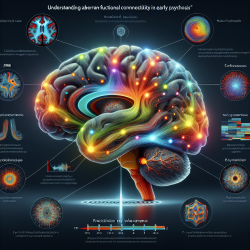Understanding the Nuances of Neurodegenerative Disorders
As practitioners in the field of speech-language pathology, we are often faced with the challenge of distinguishing between different neurodegenerative disorders. This task is crucial as it influences the therapeutic approaches and outcomes for our patients. The research article titled "Optimum Differentiation of Frontotemporal Lobar Degeneration from Alzheimer Disease Achieved with Cross-Sectional Tau Positron Emission Tomography" offers valuable insights that can enhance our diagnostic capabilities.
The Role of Tau PET Imaging
The study conducted by Josephs et al. (2022) focuses on the use of [18F]-flortaucipir positron emission tomography (PET) imaging to differentiate between Frontotemporal Lobar Degeneration (FTLD) and Alzheimer's Disease (AD). The research highlights the importance of baseline flortaucipir uptake as a more reliable metric compared to longitudinal rates for distinguishing between these conditions.
Key Findings from the Research
- Baseline uptake in specific brain regions such as the midbrain and globus pallidus was higher in FTLD compared to both high and low Alzheimer Disease Neuropathologic Changes (ADNC).
- In contrast, AD-related regions showed greater baseline uptake and higher rates of flortaucipir accumulation in high ADNC cases.
- A simple baseline metric, the midbrain/inferior temporal ratio, provided good to excellent differentiation between FTLD and high/low ADNC, with sensitivities/specificities of 94%/95% and 71%/70%, respectively.
Implications for Practitioners
For practitioners, these findings emphasize the importance of utilizing baseline PET imaging metrics to improve diagnostic accuracy. By focusing on the specific regions of interest identified in the study, we can make more informed decisions about the presence of FTLD versus AD, leading to more tailored and effective intervention strategies.
Encouraging Further Research
While the study provides a robust framework for differentiation, it also opens the door for further research. Practitioners are encouraged to explore additional biomarkers and imaging techniques that could complement the findings of this study. Collaborative efforts in research can lead to even more precise diagnostic tools and improved patient outcomes.
Conclusion
The research by Josephs et al. underscores the potential of data-driven approaches in enhancing our understanding and management of neurodegenerative disorders. By integrating these insights into our practice, we can contribute to better diagnostic precision and ultimately, better care for our patients.
To read the original research paper, please follow this link: Optimum Differentiation of Frontotemporal Lobar Degeneration from Alzheimer Disease Achieved with Cross-Sectional Tau Positron Emission Tomography.










